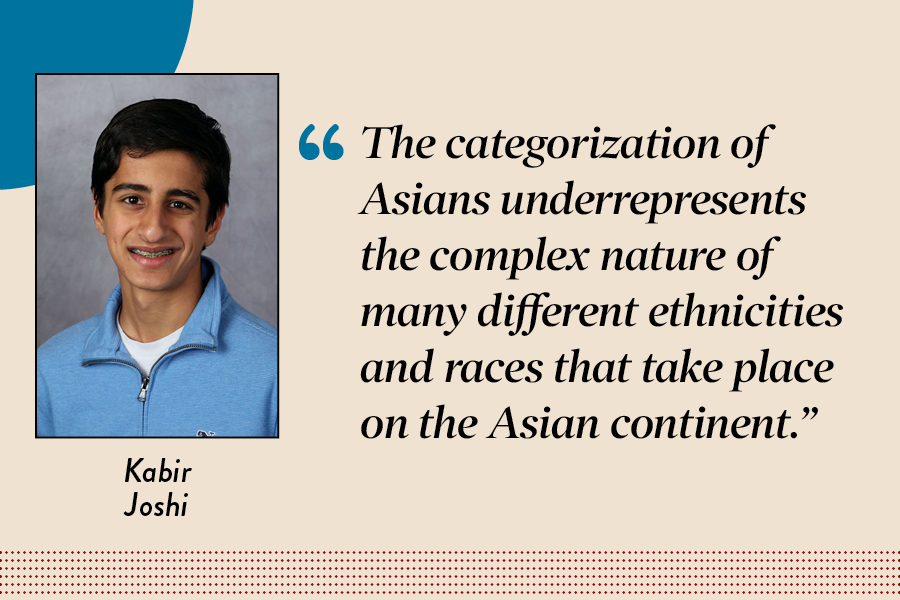I have had to fill out a form that asked for my identity recently, and I clicked Asian. Yet every time I clicked, I would cringe as I grouped myself with billions of other people around the world. I felt that maybe my identity as an Indian American didn’t matter, and that I was just one in 5 billion. For many people who identify as Asian, these little boxes with labels such as white, Black, Hispanic or Asian do not represent them to the extent that they should.
The categorization in surveys and censuses underrepresents the complex nature of many different ethnicities and races that take place on the Asian continent.
According to Worldometer, Asians make up 59% of the global population, or 4.8 billion people, and consist of six main ethnic groups. Yet when it comes to representing Asians in polls, surveys and applications, all of these ethnic groups are forced together under the title Asian for the purpose of simplifying data collection. Not only does this bring a large category of people into a group that could misrepresent them, it leads to misconceptions about ethnicities.
One example and consequence of this oversimplification is the perpetuation of stereotypes such as the model minority myth. The idea suggests that all Asians are either incredibly high achieving or financially stable. While the myth might seem complimentary in nature, it has a consistent tendency to foist undue stress and expectations upon the shoulders of Asian teenagers, holding them to standards they may not want to conform to. The stereotype also has negative consequences as it ignores realities that many Asians face on a daily basis, such as poverty. This misrepresentation leads to further harm to communities that need help but are overshadowed by the idea that Asians are generally financially comfortable. Indirectly, the careless categorization of Asians leads to stereotypes which may appear flattering but perpetuate many further issues and harm to communities.
The broad categorization of Asians leads to misrepresentation of people when it comes to data collection. A person who is Filipino or Russian or Korean each has different experiences, different religions, beliefs and ideas. When Asians are treated as one large group of people, a monolith of some sort, the representation and ideas of certain small minority groups are diminished due to the connotation of an Asian idea. This leads to smaller minority and ethnic groups facing a lack of representation, leading to little or no change when it comes to issues that affect them.
This is an issue that can be fixed, though. It’s time for researchers and politicians to accept the complexity of the Asian community and start representing them for who and what they are. Whether it be giving voice to smaller minority groups through the addition of more options on box checking surveys or working on reducing the label term Asian, these steps will all have an impact on the lives of specific ethnic groups. Embracing this complexity is an uphill battle but one that will lead to a more inclusive society that understands and embraces all human beings.






















































Simon Lane • Oct 4, 2024 at 12:25 pm
Kabir, I want to commend you on your exceptional argument. Your critique of the oversimplification in surveys and data collection is both compelling and necessary. You highlight the urgent need for accurate representation of the diverse Asian ethnicities, and your insights on the model minority myth are particularly impactful. I appreciate how you emphasize the importance of recognizing individual identities and advocate for a more nuanced understanding of our communities. Your work inspires meaningful reflection and dialogue on these vital issues. Bravo for championing such an important conversation! The U-High midway is lucky to have you as its leader.